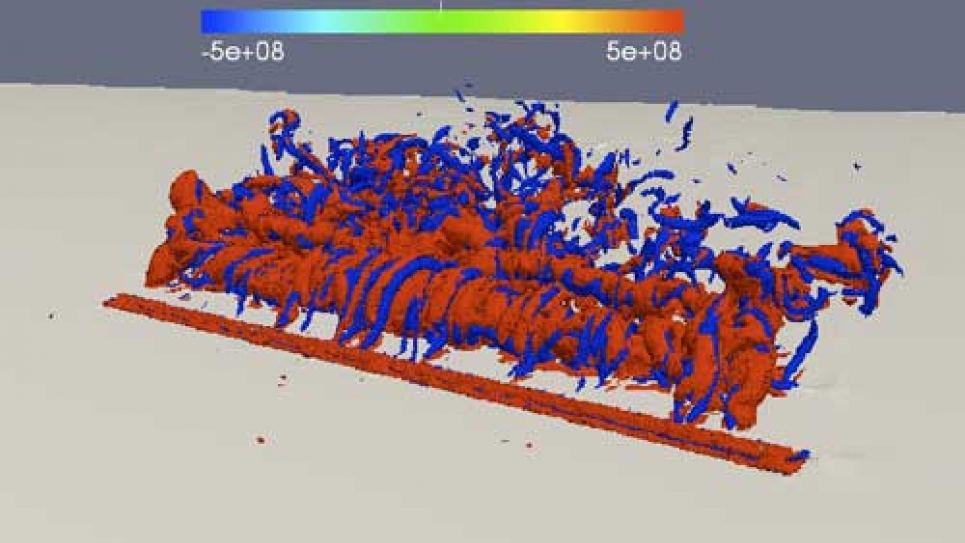
Petascale, Adaptive CFD
The aerodynamic simulations proposed will involve modeling of active flow control based on synthetic jet actuation that has been shown experimentally to produce large-scale flow changes (e.g., re-attachment of separated flow or virtual aerodynamic shaping of lifting surfaces) from micro-scale input (e.g., a 0.1 W piezoelectric disk resonating in a cavity alternately pushes/pulls out/in the fluid through a small slit to create small-scale vortical structures that interact with, and thereby dramatically alter, the cross flow). This is a process that has yet to be understood fundamentally. Synthetic jet actuators offer the prospect of not only augmenting lift but also other forces and moments in a dynamic and controlled fashion for a range of operating conditions. They have been demonstrated to restore and maintain flow attachment and reduce vibrations in wind turbine blades during dynamic pitch, thereby reducing unsteady loads on gearboxes that are currently the prime failure point. In virtual-shape flight control surfaces for aerial vehicles (including commercial airplanes), conventional control surfaces (e.g., flaps, rudder, etc.) can be augmented or even replaced with active flow control, thus improving their lift-to-drag ratio and/or control power. This project’s numerical simulations will give a detailed view of the flow interactions at a Reynolds number and simulation volume approaching engineering application scales for the first time. In these fluid flow problems, anisotropic solution features (like strong boundary and shear layers) can only be located and resolved through adaptivity of the computational mesh.